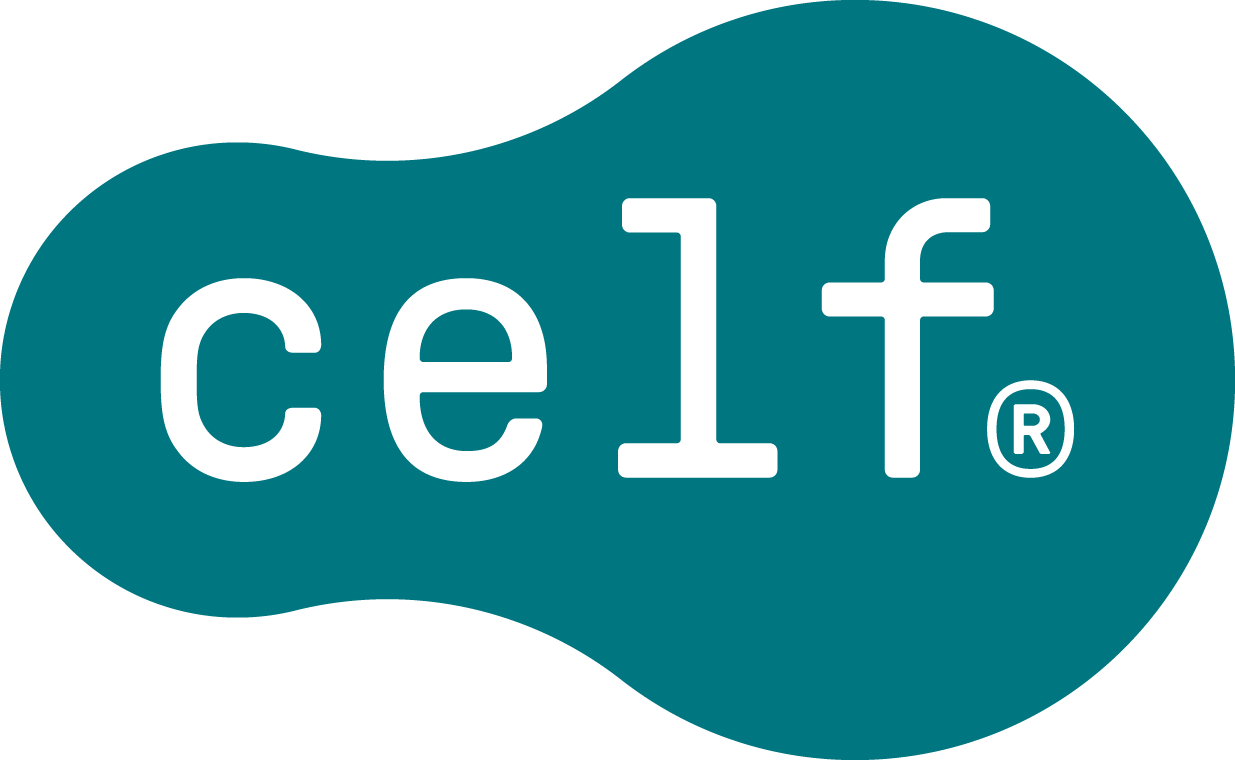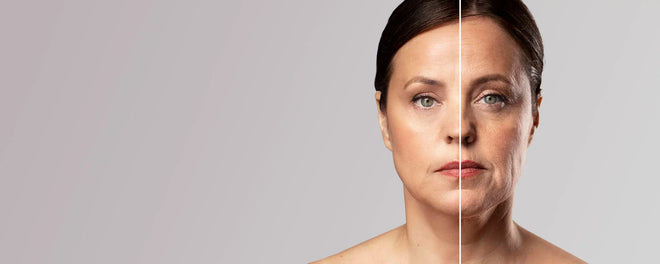Laser Skin Resurfacing vs. Microneedling: Key Differences
Table of Contents
Looking to renew your skin but unsure which method is right for you? Two of the most popular options for professional skin rejuvenation are laser skin resurfacing and microneedling. Both treatments are widely used to improve the appearance of fine lines and skin texture, with evidence supporting their cosmetic benefits, but they work in very different ways.
This guide breaks down how each treatment works, its pros and cons, and where CELF Microvibration Therapy is a non-invasive option for those who want to support their skincare routine with daily use.
What Is Laser Skin Resurfacing, and How Does It Work?
Laser skin resurfacing uses concentrated beams of light energy to improve skin appearance and texture.
How do laser energy and skin ablation stimulate collagen production?
Laser devices create controlled micro-injuries in the skin’s upper layers. This ablation triggers the body’s wound-healing response, encouraging the skin’s natural renewal process, which improve smoothness and firmness.
What types of laser treatments are used in resurfacing?
-
Ablative lasers (e.g., CO₂, Er: YAG) remove thin layers of skin, leading to dramatic results but longer downtime.
-
Non-ablative lasers heat tissue beneath the surface without removing skin, producing milder improvements with less recovery.
What concerns does laser resurfacing treat?
-
Fine lines and wrinkles
-
Sun damage and pigmentation
-
Acne scars
-
Uneven tone and texture
Risks and downtime
Ablative treatments may require 2–3 weeks of healing. Common side effects include redness, swelling, infection risk, and temporary pigmentation changes (NHS overview).
What Is Microneedling, and How Does It Work?
Microneedling, sometimes called 'collagen induction therapy', uses fine needles to puncture the skin and trigger repair.
How do microneedles stimulate dermal repair and collagen synthesis?
The micro-injuries activate fibroblast activity, involving creation of tiny punctures that encourage the skin’s repair response, which may improve texture and tone while improving skin barrier function.
Traditional vs. RF microneedling
-
Traditional microneedling uses mechanical needles.
-
Radiofrequency (RF) microneedling combines needles with heat energy for deeper tightening effects.
Conditions treated by microneedling
-
Acne scars
-
Enlarged pores
-
Early wrinkles
-
Stretch marks
Healing and safety
Downtime is shorter than lasers, usually 2–5 days. Temporary redness and mild swelling are common. When performed by professionals, microneedling is safe for most skin tones (Cleveland Clinic).
How Do Laser Resurfacing and Microneedling Compare?
Effectiveness by concern
-
Lasers are often chosen for deeper wrinkles, while microneedling is typically used for early signs of ageing.
-
Acne scars: Microneedling offers visible improvement with a lower risk of pigmentation changes.
-
Pigmentation: Ablative lasers are highly effective, though riskier for darker tones.
-
Texture: Both improve smoothness, with lasers yielding faster results.
Results and longevity
-
Lasers: Noticeable after one session; results last up to several years.
-
Microneedling: Requires multiple sessions but provides gradual, natural improvements.
Cost comparison
-
Laser resurfacing: £1,000–£3,000 per session (UK average).
-
Microneedling: £150–£500 per session.
Skin type considerations
-
Lasers can be risky for Fitzpatrick skin types IV–VI (medium to dark skin).
-
Microneedling is safer for a wider range of tones.
Pros and Cons of Laser vs. Microneedling
|
Benefit ✔ |
Laser Resurfacing |
Microneedling |
|
Collagen stimulation |
Often faster with lasers |
more gradual with microneedling |
|
Downtime |
1–3 weeks (ablative) |
2–5 days |
|
Pain level |
Moderate–high |
Mild–moderate |
|
Risk for dark skin |
Higher |
Lower |
|
Cost |
High (£1k+) |
Lower (£150–500) |
|
Longevity |
Often longer-lasting with lasers |
Typically shorter with microneedling |
Patient satisfaction rates vary. While lasers often achieve more dramatic results, microneedling is favoured for being lower risk, lower cost, and more inclusive.
Which Skin Rejuvenation Treatment Is Right for You?
When deciding between laser and microneedling, consider:
-
Skin type & tone: Darker skin may respond better to microneedling.
-
Budget: Lasers are significantly more expensive.
-
Downtime tolerance: If you can’t take weeks off, microneedling is more practical.
-
Goals: For lasers are sometimes recommended for deeper wrinkles or more pronounced scarring.
Can treatments be combined? Yes—some dermatologists alternate between the two for complementary benefits.
Preparation and aftercare are crucial: sun protection, gentle cleansing, and avoiding irritants post-procedure are essential (Mayo Clinic).
How Does CELF Microvibration Therapy Compare?
If you’re not ready for invasive or high-cost procedures, CELF Microvibration Therapy offers a third path.
Unique mechanism
CELF harnesses 160Hz low-frequency vibrations from the Oral-B iO electric toothbrush to use gentle vibrations designed to massage the skin’s surface without needles or lasers.
Benefits of CELF’s microvibration therapy
-
Non-invasive: No puncturing or ablation.
-
Collagen stimulation: Helps support the skin’s appearance and firmness when used consistently.
-
Enhanced absorption: Users find skincare products work more effectively when combined with vibration-based tools.
-
Zero downtime: Safe for daily use, even with beards or sensitive skin.
💡 Try CELF for Non-Invasive Rejuvenation
What Do Dermatologists and Studies Say?
-
Laser resurfacing: Backed by decades of research for collagen induction and wrinkle reduction (AAD).
-
Microneedling: Clinical trials confirm improvements in scars and elasticity with fewer risks (PubMed).
-
Microvibration therapy: Research suggests that mechanical stimulation has potential benefits for skin elasticity, and CELF uses the same science (NCBI study).
These findings support the idea that different levels of stimulation—heat, penetration, vibration—can all drive rejuvenation, though safety and downtime differ.
Verdict: Laser, Microneedling, or CELF?
-
Laser resurfacing: Best for severe concerns, but costly and requires recovery.
-
Microneedling: Affordable, versatile, and safer for diverse skin tones.
-
CELF: A daily, at-home option for those who prefer a non-invasive addition to their skincare routine without downtime.
FAQs
Q: Is CELF safe with microneedling or laser-treated skin?
Once fully healed, some people choose to incorporate at-home tools like CELF alongside professional treatments.
Q: How soon will I see results?
-
Lasers: 1–2 sessions, results in weeks.
-
Microneedling: 3–6 sessions, gradual results.
-
CELF: Intended for regular use as part of a daily skincare routine
Q: Are there natural alternatives?
Topical antioxidants and retinoids support skin health in different ways than vibration-based tools.
Q: Can I alternate between these treatments?
Yes—dermatologists often recommend professional procedures yearly and daily support tools like CELF in between.
👉 Get Started With Gentle, Science-Backed Skin Revitalisation.




